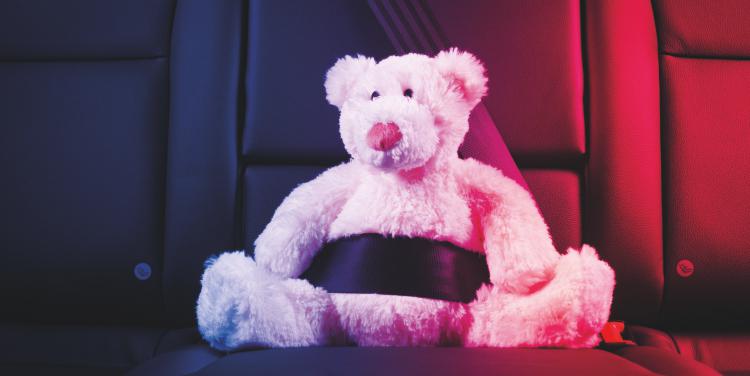Recall people with whom you felt safe as a child.
If you can, and if your parents or caregivers were one of them, consider yourself lucky and blessed. According to Dr Bessel Van Der Kolk, in his exceptional book on trauma, called ‘The Body Keeps the Score’, people who have been brutalized as children by their caregivers often do not feel safe with anyone. Some people do not remember anybody they felt safe with.
When I read that, my first reaction was, ‘How is that possible? No one’! But the more I thought, particularly understanding brutality in the context of childhood sexual abuse experienced at the hand of parents/family/caregivers, the more it began to make sense. The role of relationships with loved ones in families, especially for children, is also to provide emotional and physical safety, among other things. Safe relationships are invaluable in protection against threat. And so, if home and family have not been a safe space, then finding safety in other relationships might well prove to be challenging.
Global research indicates that for more than 50 per cent of the children who experienced some form of sexual abuse, the perpetrator was a person known to them.
For a child, typically, home should be the safest place and family the safest set of relationships. Safety is understood as people we can trust; those who are entrusted with our wellbeing. It starts with parents, primary caregivers, moving on to extended family, close friends, and the circle widens. However, global research indicates that for more than 50% of the children who experienced some form of sexual abuse, the perpetrator was a person known to them, with a high percentage of them being a family member. My own dissertation which studied urban Indian adult survivors of child sexual abuse in the context of attachment to God, religious coping and post-traumatic growth, indicated that about 90% of the participants knew their perpetrators well (51% were immediate or extended family and 34% constituted neighbour, friend, or someone they knew). This is a sobering thought as it implies that our children are not only highly vulnerable to abuse but most often by the very people who are trusted with them. All people that the child trusted. Or people who were trusted by the parents. People who had easy access to the children. In such a context, ‘safe’ no longer makes sense to a child.
These dynamics have significant implications for the church. Let’s connect the dots here. More than half the population has experienced some form of sexual abuse, whether disclosed or not. The pervasive nature of this abuse can shatter body, mind and spirit. Closer the relationship between the perpetrator and the victim, greater is the adverse impact. Trust and safety are compromised. Research data indicates that for many survivors, God is symbolic of the abusive authority figure they have experienced. Understandably mistrusting of people, survivors often extend their mistrust to God, making it as difficult to form an attachment to God as to other people. What kind of church will be the outcome of a huge population that mistrusts both God and man?
Mistrusting of people, survivors often extend their mistrust to God, making it as difficult to form an attachment to God as to other people. What kind of church will be the outcome of a huge population that mistrusts both God and man?
When safety is compromised, trust is broken in people. Sometimes, even in God. Numerous studies that document the relationship of sexual abuse survivors with God indicate that several of them perceived God as a cold, distant, wrathful, punitive figure who did not care about them. They experienced rejection, betrayal, abandonment, disconnection and isolation from God and experienced deep anger and mistrust. Furthermore, with God represented often as a male figure, the projection of male perpetrators upon God makes the survivor-God relationship even more complex.
That said, research also shows that for many, God has been experienced as a source of strength, a safe haven and a secure base from which sexual abuse survivors have explored and made meaning of their painful experiences. In a secure attachment to God, they have found protection, inner strength and support, providing them with a greater sense of personal hope and self-acceptance, thus experiencing growth and healing. References to God as a safe refuge, protection from harm, one who takes away their shame, that are found in the Bible are quite literally true for many survivors. Despite having experienced early abusive relationships in caregiving spaces, experiences of relating with God as quiet counter to their human relationships serves for many as a ‘compensation space’ (compensation hypothesis), an alternate and new paradigm of trust, hope and protection, which can then serve as a basis for possible restoration in human relationships.
A lot of this, for a lot many people, starts in their childhood. If we want our children to be safe and have a safe and trustworthy paradigm about relationships, we need to create a culture of safety and trust. Churches will be healthy, safe and trusting spaces when individual homes and families are trustworthy and safe spaces. We have to be safe parents for our children. The people we trust and entrust our children with and allow access to our homes must be safe people. In this modelling of being a safe refuge, a place to return to in distress, a secure space, one hopes that children will also develop an image of God based on truth and experience—as the one who is truly a safe refuge and with who they can form a trustworthy relationship.





